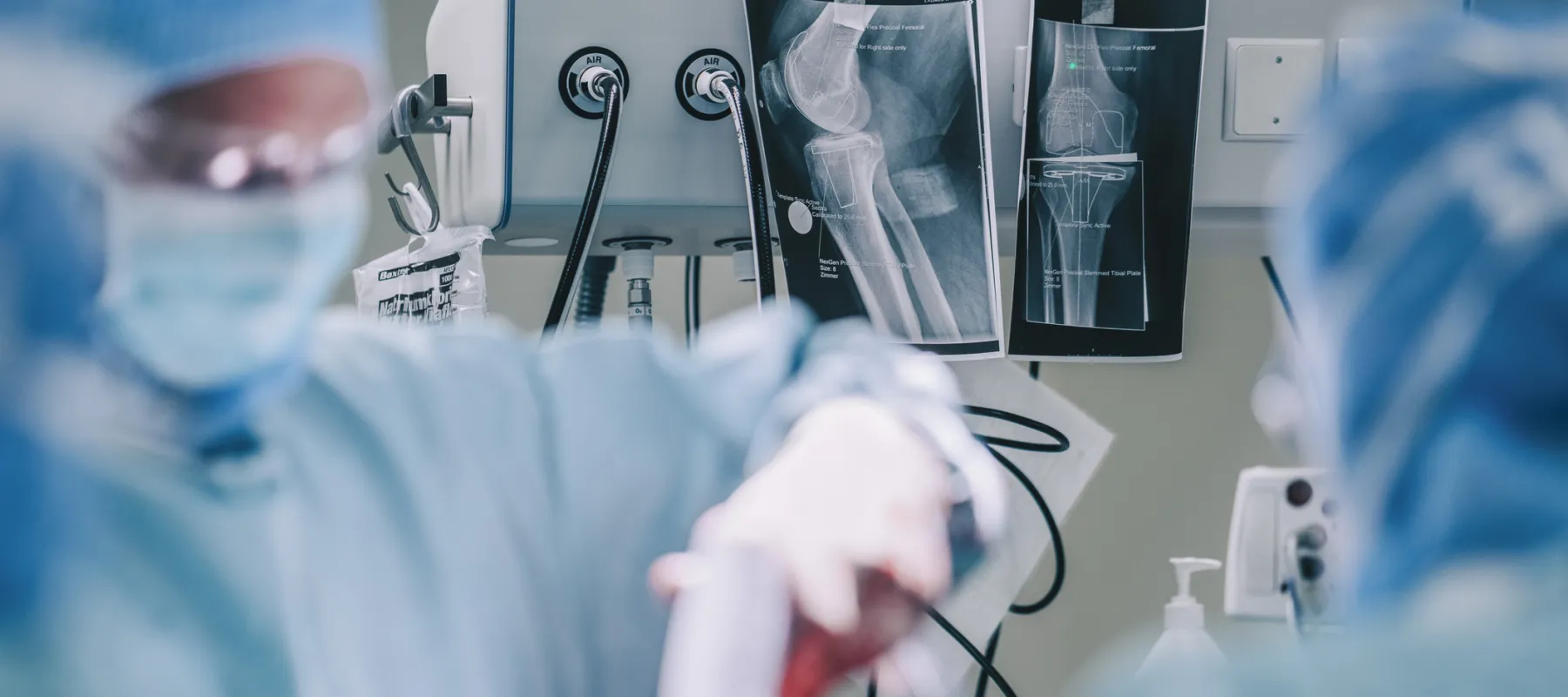
Robotic Partial Knee Replacements: What’s the Benefit, What’s the Risk?
Written by: Dr. Timothy Alton
1. Improved Precision and Accuracy Robotic-assisted partial knee replacements offer a significant advantage in terms of precision. Using advanced imaging technology, the robotic system creates a detailed 3D model of the patient's knee. This allows me to plan the procedure with extraordinary accuracy, ensuring that only the damaged portion of the knee is replaced while preserving healthy tissue and bone. This precision leads to better alignment and placement of the implant, which can improve the joint's functionality and longevity compared to traditional techniques.
2. Faster Recovery Times One of the main benefits of a partial knee replacement, especially when performed robotically, is a faster recovery time. Unlike a total knee replacement, this procedure only addresses the damaged compartment of the knee, minimizing trauma to surrounding tissues. The robotic system helps ensure smaller incisions and reduced disruption of soft tissue, which can result in less post-operative pain, reduced swelling, and a quicker return to daily activities.
3. Enhanced Patient Outcomes Patients who undergo robotic partial knee replacements often experience great outcomes. The precise placement of the implant reduces the risk of complications like misalignment or instability, which can cause pain or limit mobility. Additionally, maintaining the healthy parts of the knee, including the ligaments, allows for a natural feel and movement post-surgery. This approach helps patients achieve greater satisfaction and functionality in the long term.
4. Lower Risk of Complications Robotic systems enhance the surgeon's ability to operate with minimal errors, which can lower the risk of complications during and after the procedure. By preserving more of the natural knee structure, the surgery is less invasive, reducing the likelihood of infections, blood clots, and other common surgical risks. Furthermore, the robotic technology continually assists the surgeon during the procedure, providing real-time feedback to ensure optimal outcomes.
5. Longevity of the Implant The accuracy of robotic-assisted surgery not only improves immediate outcomes but also contributes to the longevity of the implant. Proper alignment and fit reduce wear and tear on the implant, potentially delaying or eliminating the need for future revision surgeries. For younger or more active patients, this means enjoying a longer period of pain-free mobility without worrying about early implant failure or deterioration.
6. What's the Downside? There is a higher rate of revision, or re-do, surgery with partial knee replacement surgery compared to total knee replacement surgery. This is multi-factorial. Patients who have a partial knee replacement still have the other compartments of the knee which can wear out and cause pain. If this happens, these patients need further surgery to convert the partial knee replacement to a total knee replacement. Also, the implant is small and experiences high levels of stress which can cause loosening and need for conversion to total knee replacement. Finally, partial knee replacement patients are often younger which means they have more time for the implant to experience wear and tear and fail, resulting in the need for further surgery.
Both total knee replacement and partial knee replacement surgery are great options for curing end stage osteoarthritis. There are both benefits and limitations to partial knee replacement surgery. Undoubtedly, robotics helps improve patient outcomes and implant longevity with knee replacement surgery. I look forward to talking with you about which joint replacement option is best for you.
